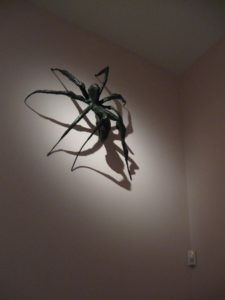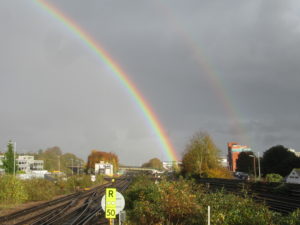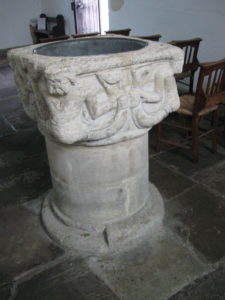Just over a mile apart, the Fitzwilliam Museum and Kettle’s Yard share characteristics that help to make Cambridge a leading light in both historical and contemporary art.
The Fitz has a renowned collection of antiquities, in large part provided by archaeological work around the Mediterranean and in the Near East, but it also contains in the Adeane Galleries on its upper floor some excellent examples of modernist and contemporary art. Nearby it has space in the intimate Shiba Room and larger galleries for temporary shows from a range of periods. Its most recent, unfortunately, could not be photographed, but drawings and prints by Whistler and a mixed show in the Shiba Room are splendid. No sculpture but fine graphic work. The Octagon had both, from several centuries including the twentieth.
Kettle’s Yard was developed as a house for Helen and Jim Ede; their collection was left to the University and can be seen by timed ticket. The newly extended gallery continues as before to show mainly contemporary work, and offers in addition study rooms and small exhibition spaces and a video presentation.
Viewed from an upstairs window at Kettle’s Yard is the tiny St Peter’s church, built in the Norman period so one of the earliest buildings still standing in Cambridge. Its font, now the church is deconsecrated, is a sculptural experience to rank with any.
The main exhibition in the gallery was work by Louise Bourgeois, daughter of a Belgian cloth manufacturer, who made good use of her earlier experiences in and around the factory. In later life she also took to casting in bronze, and is well-known for her spiders in various sizes. (A giant one is outside the Guggenheim at Bilbao.)
At the Fitzwilliam there are sculptures by Rodin to compare with those currently showing in “Kiss and Tell” at Christchurch Mansion in Ipswich. Always a delight are the Degas sculptures of ballet dancers. Also evoking music that could be for dance is the Barbara Hepworth stringed figure, while her Parian marble form has pride of place in a display of achievements by women set among ceramics of many centuries, some of these more sculptural than utilitarian. Jennifer Lee in contemporary terms and Lucie Rie from the mid- to late-twentieth century are exemplary.
There is so much to see that strict selection has to be observed. Walking between the two sites allows reflection on what has been seen, as well as for perusal of posters for other events available in this delightful city. For those who prefer, or need, a good bus service travels many routes. Nobody should be at a loss here.










